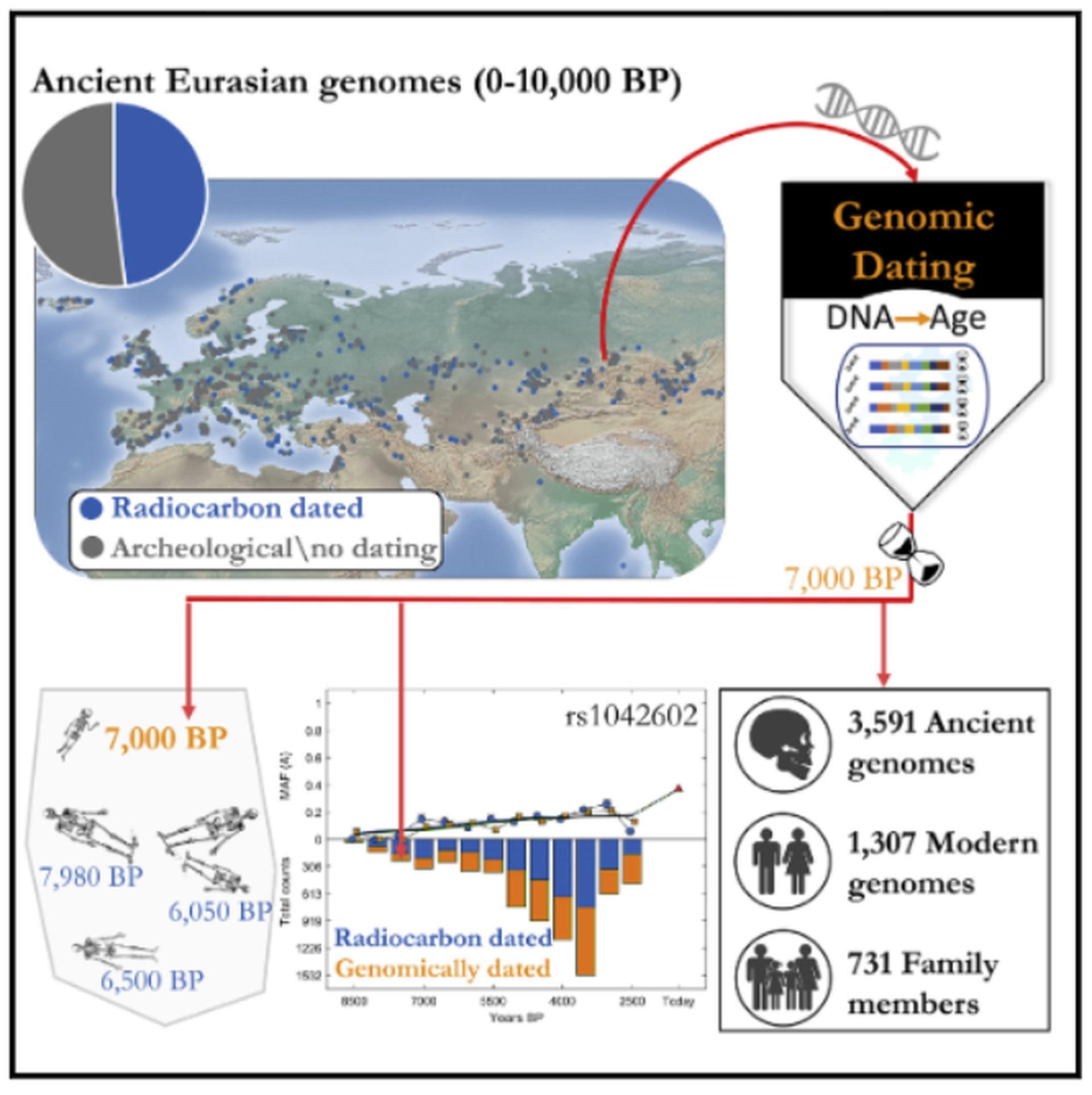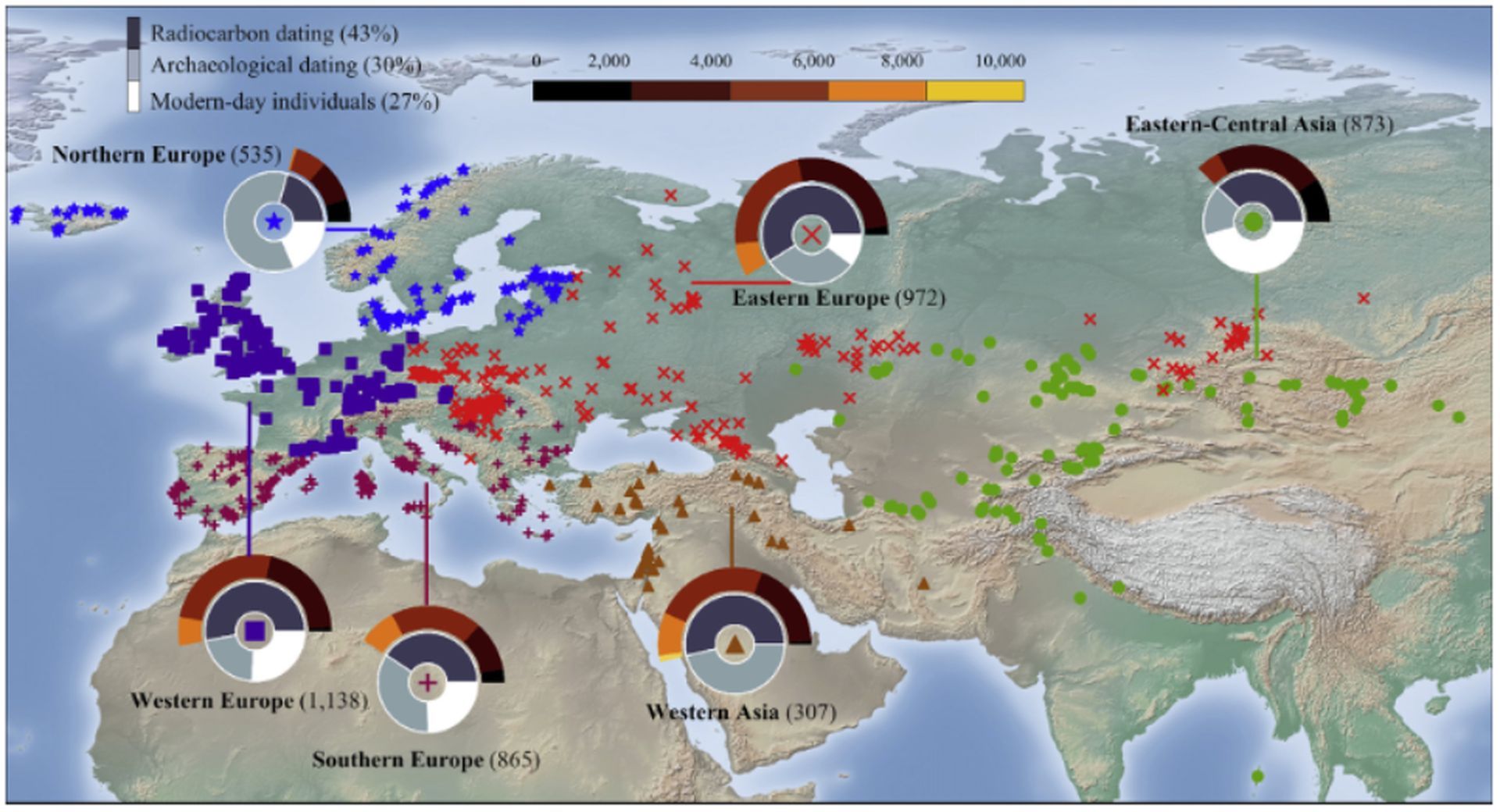- Researchers in Sweden have developed a method for integrating artificial intelligence (AI) and DNA analysis to date human remains up to 10,000 years old.
- The new method, Temporal Population Structure (TPS), allows for dating genomes up to 10,000 years old.
- The researchers analyzed about 5,000 human remains from the Late Mesolithic (10,000–8,000 BC) to the present.
- TPS can be used to create alternate theories for samples older than 10,000 years old or where radiocarbon dating is difficult or unclear. This limitation may eventually be removed as more ancient evidence accumulates.
An international research team led by Lund University in Sweden has created a new technique for using artificial intelligence (AI) and DNA analysis to date human remains that are up to 10,000 years old.
The conventional method is radiocarbon dating
The new method could aid in mapping historical human migration patterns, frequently accomplished by precisely dating ancient remains.
Radiocarbon dating has been the accepted dating method since the 1950s. Based on the ratio of two separate carbon isotopes, this dating technique has been extremely influential in contemporary archaeology. Having said that, it can be challenging to map ancient people’s movements because the technology can sometimes be inaccurate.

According to the experts, the new dating technique might be very helpful to paleontologists and archaeologists.
Radiocarbon dating is the industry standard in archaeology to determine the age of bones and their origins. Numerous published ancient genomes lack accurate and precise dates, leading to ambiguous and conflicting reports.
The research team used 3,591 ancient and 1,307 modern Eurasians to test the temporal population structure (TPS), a DNA-based dating technique for genomes from the Late Mesolithic to the present. The TPS forecasts agreed with the actual dates and accurately considered kin ties. One test scenario demonstrates how TPS dating of poorly dated Eurasian materials addressed conflicting reports in the literature.

The study also showed how TPS’s capacity to research phenotypic features evolved over time. TPS can be used to develop alternative hypotheses for samples older than 10,000 years ago or when radiocarbon dating is impracticable or ambiguous, a constraint that may be overcome over time as more ancient data accumulates.
Midjourney AI: Poets are becoming painters with artificial intelligence
At Lund University, Eran Elhaik studies molecular cell biology and he said:
“Unreliable dating is a major problem, resulting in vague and contradictory results. Our method uses artificial intelligence to date genomes via their DNA accurately.”
What is Temporal Population Structure (TPS)?
Temporal Population Structure (TPS) is the name of the new technique, which may be used to date genomes up to 10,000 years old. The scientists examined about 5,000 human remains that ranged in age from the Late Mesolithic period (10,000–8,000 BC) to the present.
The study showed that all of the examined materials could be dated accurately.
“We show that information about the period in which people lived is encoded in the genetic material. By figuring out how to interpret it and position it in time, we managed to date it with the help of AI,” Elhaik stated.

The experts predict that radiocarbon dating will still be required in the future. When there is ambiguity regarding radiocarbon dating results, TPS might be utilized as a supplemental tool in the paleogeographic discipline. For instance, one of the well-known discoveries of a human skull came from Zlatk in what is now the Czech Republic, and its age ranges from 15,000 to 34,000 years.
Why do we need AI to power the green energy transition?
“Radiocarbon dating can be very unstable and is affected by the quality of the material being examined. Our method is based on DNA, which makes it very solid. Now we can seriously begin tracing ancient people’s origins and mapping their migration routes,” Elhaik explained.
The new study was published in Cell Reports Methods for those who want to learn further.





